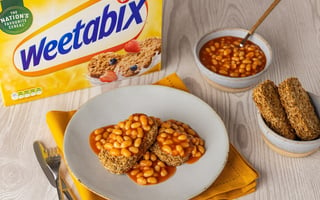Sometimes there are plenty of things for your organisation to shout about and use to try to gain...
It can feel like coronavirus is the only story around.
Endless broadcast coverage, devastating headlines, pages of print and press conference beamed directly into our homes.
Additionally, pretty much everyone has an opinion about it on social media.
The only story that has budged the pandemic from the top of bulletins has been the Black Lives Matter protests.
But are these the only stories around at the moment and is there any point in brands looking to get positive stories into the media in the current climate?
If you look in a little more detail at some of the recent media coverage there is more going on – and much of it is good news stories.
The story of Captain Tom Moore, for example, reached just about every home in the country, raising enormous amounts of money and started as a simple press release to a local newspaper. And there are plenty more examples that caught our attention:
It can be really difficult for comms and media teams to be across everything that goes on in a large organisation.
So, it’s no surprise that departments and teams that understand what the media are looking for in a story often have the best relationship with their comms department.
Regularly readers to this blog will know that there are many reasons why you would want to generate more positive PR. Perhaps, for example, your department or project wants more PR to help raise more awareness or funding?
Whatever your motivation the first stage is understanding what the media are looking for in a story. And that’s just what we will look at in the second part of this blog.
Oh, and if you want a deeper dive then I’d recommend checking out our 20-minute online course on story identification.
A well as the good news we have already highlighted, it is also worth pointing out that the BBC News website and the Daily Telegraph have dedicated good news sections and that on Instagram, accounts dedicated to good news like @TanksGoodNews and @GoodNews_Movement have seen huge growth in followers.
Additionally, a quick search of #journorequest on Twitter shows there are plenty of reporters looking to interview people about wider stories.
And this surge in good news is likely to be here for some time as people continue to seek some relief from the anxiety and devastation that surrounds the virus.
What makes a good story at this time?
With more businesses gradually returning and shops reopening today (15 June), the fight for media attention is going to intensify.
But it is not those that shout loudest who will get that much craved for coverage.
The focus will instead be on those who have the best story to tell.
If we look back at the stories we highlighted earlier, some of them are newsworthy because they are unusual, such as penguins roaming freely and being able to see jellyfish swimming in the waters around Venice.
Others capture human kindness, for example, the Aldi manager and the mechanic fixing a doctor’s car for free.
Some are about large organisations finding ways to help out and show their commitment to society during this global health crisis and others stem from the kind-hearted actions of individual employees.
All of them are uplifting and are relevant and topical because they have some form of coronavirus link.
So, what does all this mean for organisations?
Well, there remains a huge demand for positive stories.
There is an opportunity to show what your organisation is doing to help during this crisis. And there is an opportunity to show how individual members of your team are going over and above their role and showing compassion and kindness.
And because many brands have been understandably cautious about their comms, it is probably easier to get positive coverage now than when we move closer to normality and everyone will be looking for airtime and column inches.
Here’s a reminder of the TRUTH test we use on our media training courses to show what a journalist is looking for in a story.
T topical, of the moment, and something people are talking about – anything with a coronavirus link, a health angle, or coping with isolation would be considered particularly topical at the moment.
R relevant to a specific audience
U unusual. Not what people already know or expect – would you expect penguins to be walking freely around an aquarium?
T trouble. Show how you are solving a problem. A good example of this is the Formula One teams developing breathing aids because of equipment shortages in hospitals.
H human interest. What is in it for people? What impact will it have on your customers and the journalist’s audience? The story about the Aldi manger that we mentioned earlier, shows human kindness.
How do you find these stories?
Some of the stories we have highlighted in this blog are based on large corporate initiatives, such as the Formula One teams creating breathing aids, and you would imagine – or at least hope – that comms teams were involved in the process at an early stage.
But many of the other examples, are based on much more localised, and often spontaneous, events.
These stories can be easily missed and will rely on comms teams being notified by media-aware colleagues on the ground.
This is why it is crucial people across an organisation have an understanding of what makes something newsworthy and are on the lookout for positive stories and case studies that their comms teams can share.
To help with this, we have just launched a new interactive, online course – Identifying Positive Media Stories – which will help businesses improve their news gathering across the whole organisation. It takes just 20 minutes to complete and prices start from £2,000 for 50 delegates.
If you need more spokespeople to tell your positive stories to the media, we continue to offer self-guided online training courses and tutor-led courses by videoconference. Additionally, our television and radio studios will re-open for face-to-face media training on July 6.
Before you go ahead and seek coverage, make sure that you have a proper story to tell and that it has more substance than a tenuous coronavirus link – you don’t want your story to be seen as a cynical marketing ploy, crass or as an attempt to profit from the crisis.
But get the story right and this could be a good time to be in the media.
If you need help with your news gathering and are keen for your staff to help you generate more positive coverage, you might be interested in our new online course Identifying Positive Media Stories. There is a £500 discount on orders made in June.
Media First are media and communications training specialists with over 30 years of experience. We have a team of trainers, each with decades of experience working as journalists, presenters, communications coaches and media trainers.
Subscribe here to be among the first to receive our blogs.




